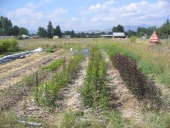


Clean With Cleaners You Can Eat by Raven Ranson
will be released to subscribers in:
soon!




 1
1




Some places need to be wild










 1
1




Some places need to be wild



















Some places need to be wild
 6
6




Check out Redhawk's soil series: https://permies.com/wiki/redhawk-soil
 2
2




 4
4




 4
4




Trying to achieve self-reliance on a tiny suburban plot: http://gardenofgaladriel.blogspot.com
 1
1




Check out Redhawk's soil series: https://permies.com/wiki/redhawk-soil
 1
1




 4
4




Trying to achieve self-reliance on a tiny suburban plot: http://gardenofgaladriel.blogspot.com
 1
1




Check out Redhawk's soil series: https://permies.com/wiki/redhawk-soil
 3
3














 1
1




Some places need to be wild
 3
3




 1
1




 2
2














 1
1




Some places need to be wild
 1
1




 1
1




 1
1




Galadriel Freden wrote:My trees aren't rigidly espaliered, but they are confined to two dimensions and kept to the height of the fence.
'What we do now echoes in eternity.' Marcus Aurelius
How Permies Works Dr. Redhawk's Epic Soil Series
 2
2




Joylynn Hardesty wrote:
Galadriel Freden wrote:My trees aren't rigidly espaliered, but they are confined to two dimensions and kept to the height of the fence.
Galadriel, how old are your espaliered trees? This may be a solution for my situation. Thank you!
Trying to achieve self-reliance on a tiny suburban plot: http://gardenofgaladriel.blogspot.com

|
Everybody! Do the Funky Monkey! Like this tiny ad!
The new gardening playing cards kickstarter is now live!
https://www.kickstarter.com/projects/paulwheaton/garden-cards
|









